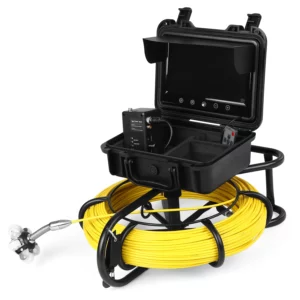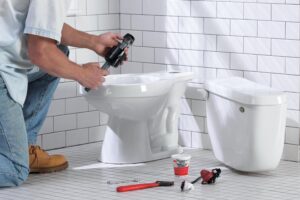The Certified Green Sustainability Contractor Standard Is Here
I have owned or operated cleaning businesses for almost thirty years. I have seen cleaning methods change, and the introduction of an endless supply of new cleaning chemical products and applicators come on to the market. Each product or method has a sales pitch or gimmick. How are contractors or our end users able to differentiate what works and what doesn’t? The only way to tell is to use the product or process and look at the end result.
There is a new challenge for building operators. There is the new push for being “green” and “sustainable” in all aspects of our operations. The problem is that some products are being called green because they are in a recycled bottle or use less toxic (but not safe) cleaning chemicals or are less detrimental to the environment. There are many different definitions of green cleaning. How are cleaning contractors and their clientele able to determine what truly is “green”?
In Canada there is now a program called the Canadian Green Sustainability Program (CGSP). The Canadian Sanitation Supply Association (CSSA) has developed this comprehensive management and operations program to help standardize the cleaning industry from coast-to-coast. The philosophy for this program is “A new standard for Canadians…by Canadians”.
Let’s look at the definition of the word “sustainable” created by the World Commission on Environment and Development- “Forms of progress that meet the needs of the present without compromising the ability of future generations to meet their needs.”
There are many definitions for “green cleaning” but the definition most followed is “cleaning that cause less harm to human health and the environment when compared to other competing products and services.”
The new Standard created by the CSSA hopefully will create a common ground that all manufacturers, distributors, retailers, contractors and end users will be able to relate to. I have looked at programs created by people like IFMA and BOMA and their green sustainability seems to focus on everything from energy and water reduction to site location and building envelope. But I have yet to see an outline on how to perform sustainable green cleaning.
While my company was making the necessary changes in our standard operating procedures to be compliant with the new CGSP standard we had to look at several subjects that included:
- An understanding of LEED and third party accreditation
- Indoor air quality
- Products and procedures
- Waste management
- Company policies (including procurement)
- Auditing the system
Third Party accreditation is a very important aspect of this program. The two programs that are recognized by the new standard are Ecologo and Green Seal. The products used should be certified by one of these organizations and have their logo if such a product is available. We have had no problem finding general purpose cleaners, floor cleaners, bathroom cleaners, carpet cleaners and floor finishes that have the required certifications. This CSSA program is a good way to get prepared for LEED certification.
Should products used not be available with Ecologo or Green Seal Certification then they must be low VOC and scent free wherever possible. These are two aspects of cleaning solutions and processes that contribute to poor indoor air quality.
There are three areas of concern that impact indoor air quality under this program:
- Microbial contaminates
- Airborne particulate
- Gases
Microbial contaminates covered under this program are moulds and bacteria. The main procedure used to prevent mould growth is moisture control. If there is no moisture, mould cannot grow. Microfiber made of polyester or polyamide fiber hold about seven times their weight in water and allow for cleaning at the microscopic level. Microfiber mops allow significant reduction in the amount of moisture used while cleaning and reduces the collateral damage caused by reckless use of regular string mops.
Particulate control can be greatly improved by changing vacuums to true HEPA vacuums. There is a big difference between HEPA vacuums and vacuums using HEPA filters. HEPA vacuums are tested to ensure that soils being introduced into the vacuum system actually pass through the HEPA media and are captured by the filter. A HEPA vacuum must trap 99.97% of particulate 0.3 microns in size or larger.
Floor scrubbers and floor sanders must be fitted so that particulate is kept to a minimum. We use machines capable of being attached to HEPA vacuums.
Company policies and auditing the company’s procedures are other essential components of the program. We have found that many of our cleaning staff are reluctant to change cleaning products. Some of their reasons have been interesting. Some cleaners have complained that the new cleaning products don’t foam. They state that they didn’t believe that non-foaming products worked as well as ones that do. Many other cleaners have complained that the new products don’t work as well as the old ones. They state that they put more cleaning solution in and it still doesn’t work. Well many of the cleaners are automatically dispensed or don’t require a heavy dilution. This runs contrary to what many cleaners believe to be true-that more cleaning solution is better. Unfortunately the opposite is true with many products-the more concentrate put in the worse it works. Training your staff in proper product usage is absolutely essential. Monitoring what is being used is also important.
Finally is waste reduction. We have created a recycling policy and it’s amazing how much recycling we have accomplished. This includes rags, paper and bottles.
Our company Fresh and Clean has just become the first company in Canada to be a Certified Green Sustainability Contractor under the new program. We are extremely proud of this accomplishment. We had many policies in place that already met the new standard. We had to change quite a few. But the net result will be that our customers’ sites will be cleaned safer and actually end up cleaner.
The main things we learned preparing for the program and standard were that microfiber cleans better than regular cloth, HEPA vacuums greatly reduce airborne particulate and that microfiber mops reduce moisture and that in turn reduces microbial growth.
The new CSSA program also has another aspect that deals specifically with the building management.
That will be left for another day.





